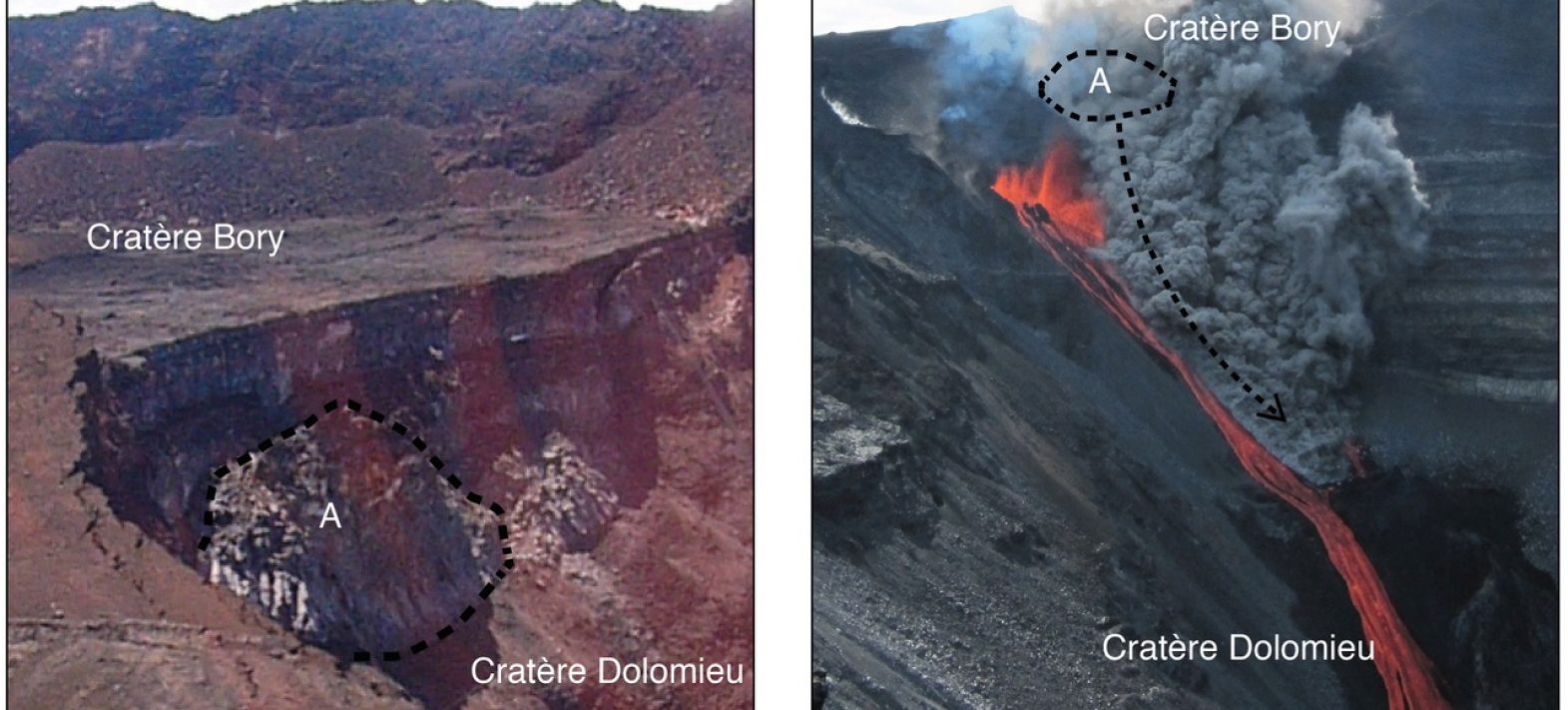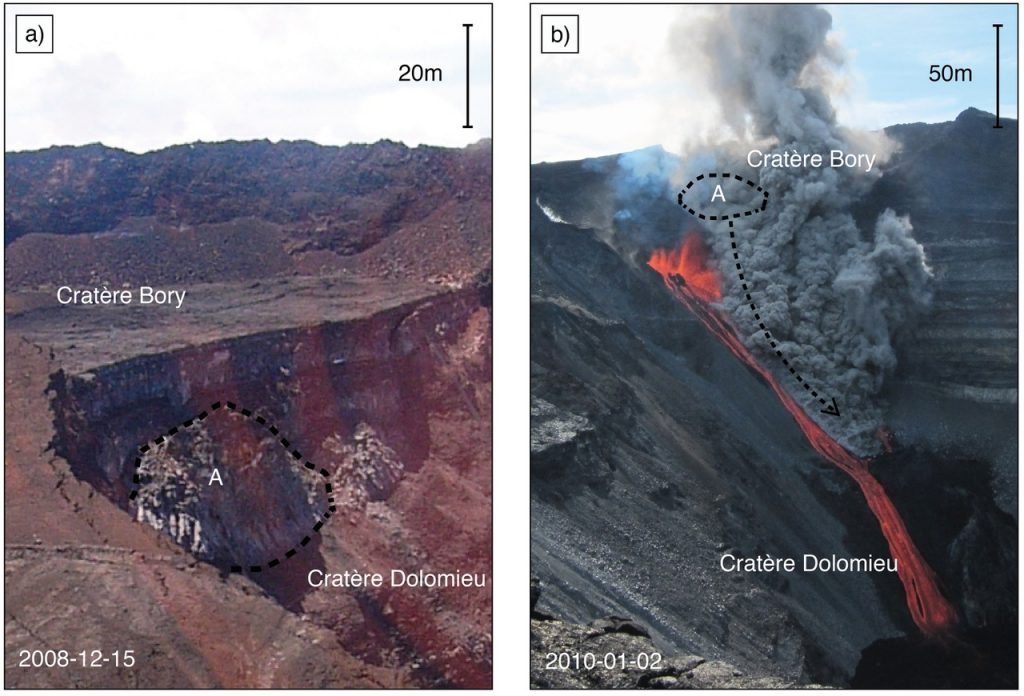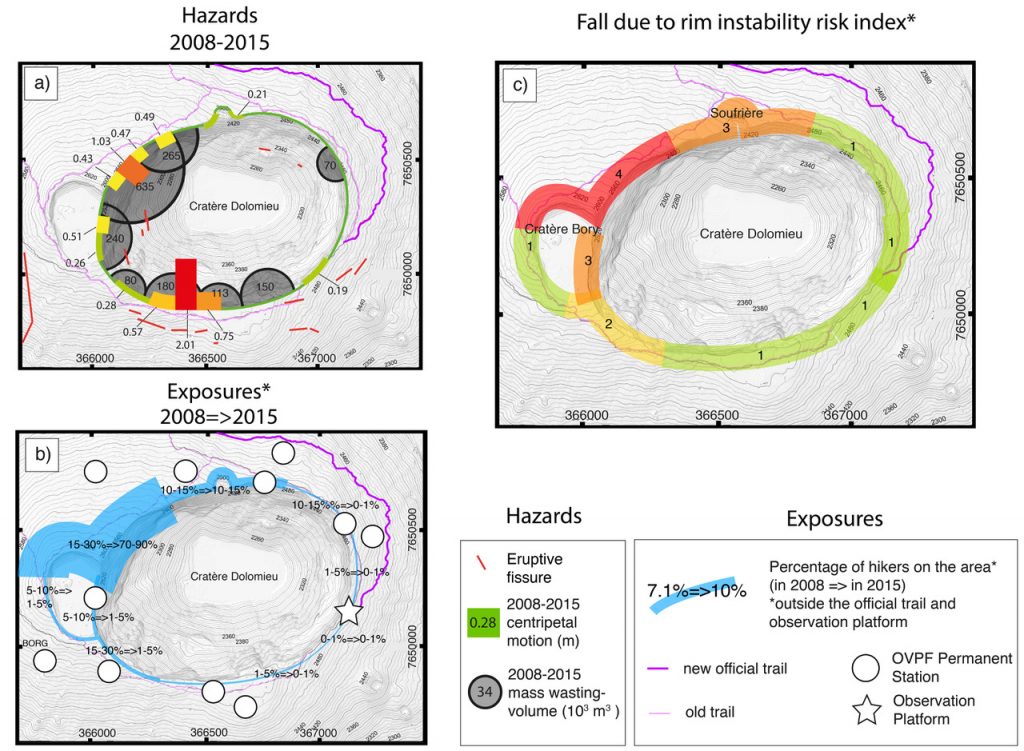Study of the unstable zones around the Dolomieu crater and assessment of the risks for visitors
In April 2007, the morphology of the summit of Piton de la Fournaise changed radically. Its main crater, the Dolomieu, previously filled to the rim with a field of lava from successive summit eruptions, collapsed in the space of a few days into an abyss around 300 metres deep.

Publication date: 30/10/2018
Observatories, Press, Research
Related observatories : Volcanological Observatory of Piton de la Fournaise (OVPF-IPGP)
Related themes : Natural Hazards









